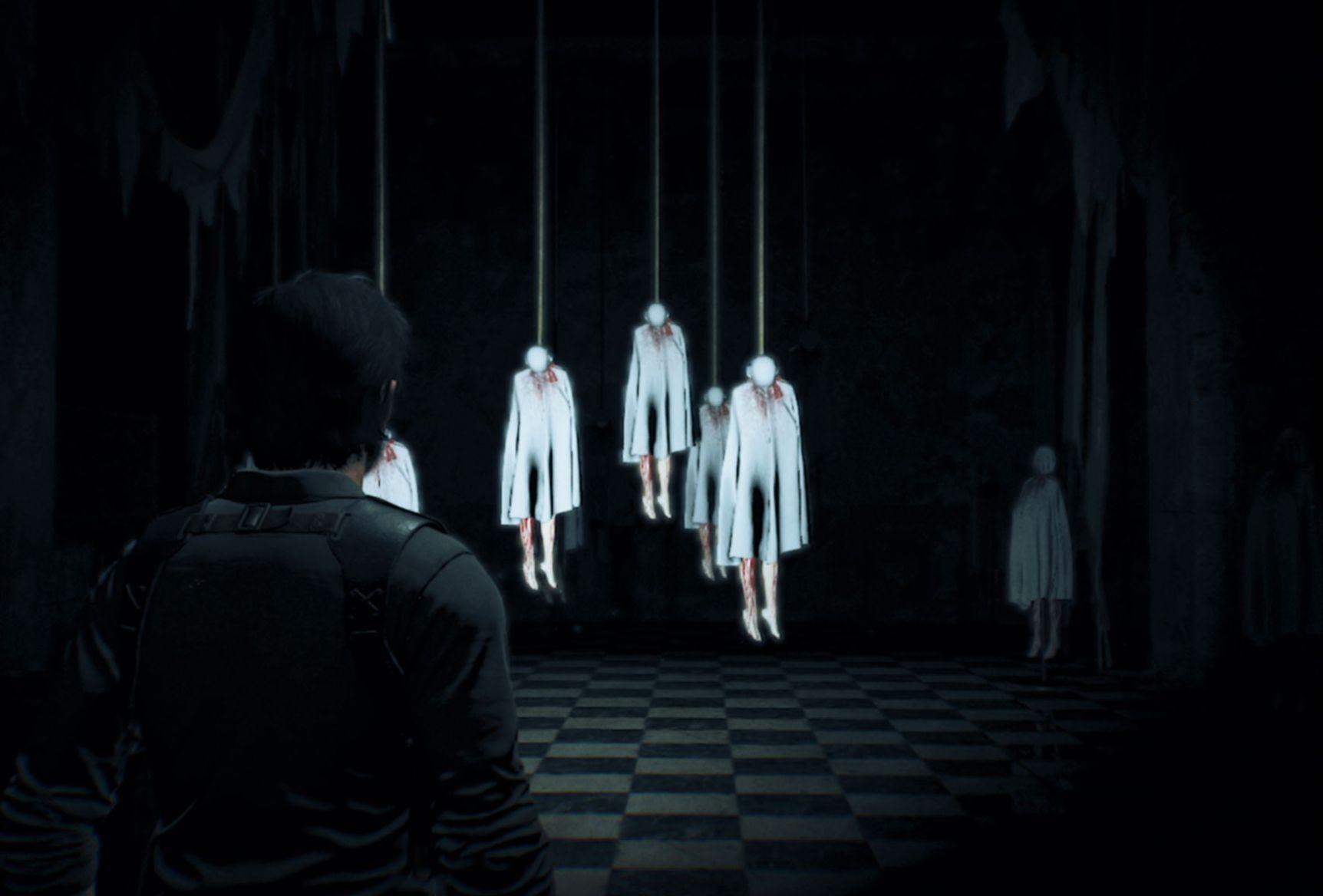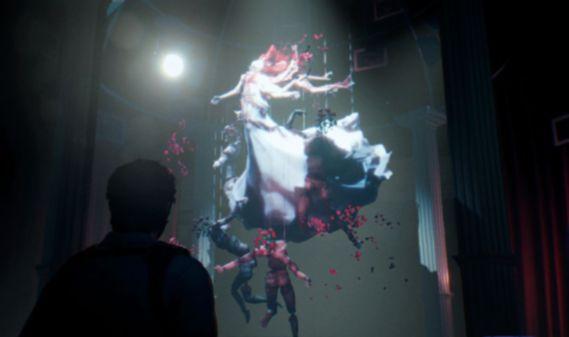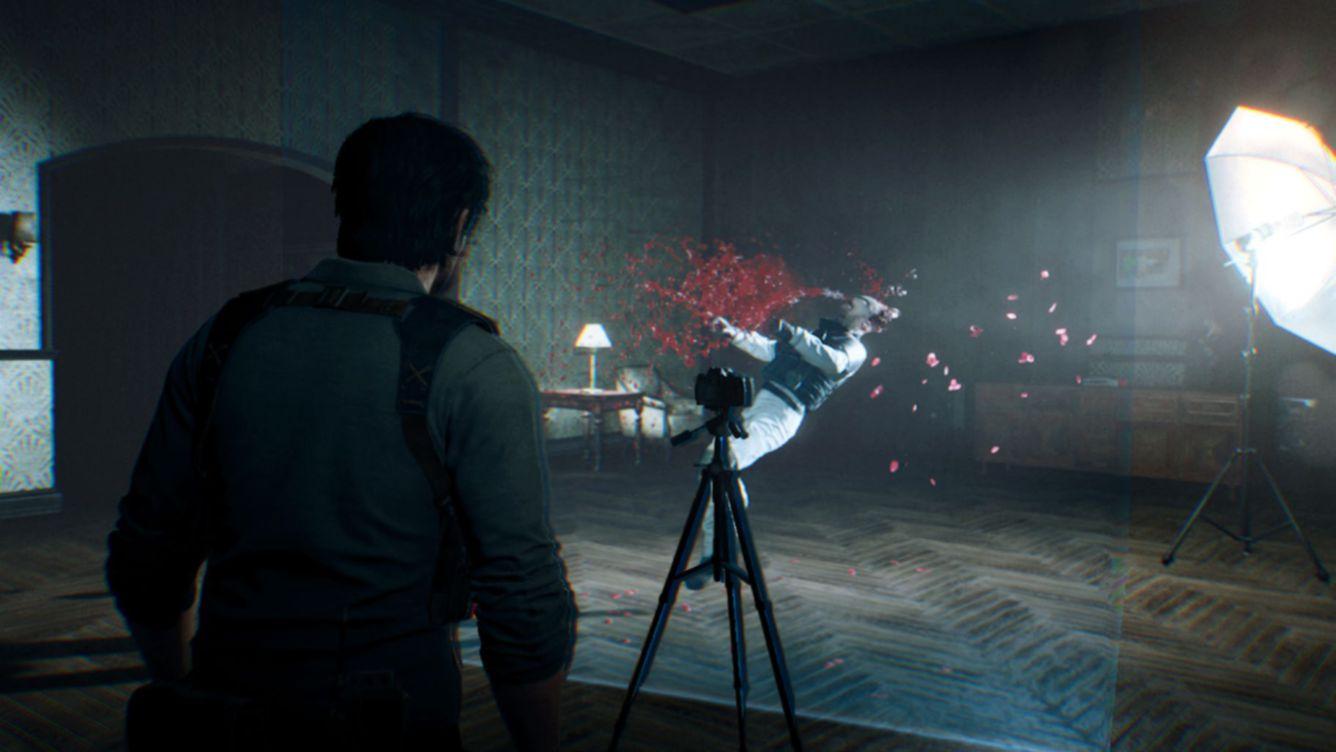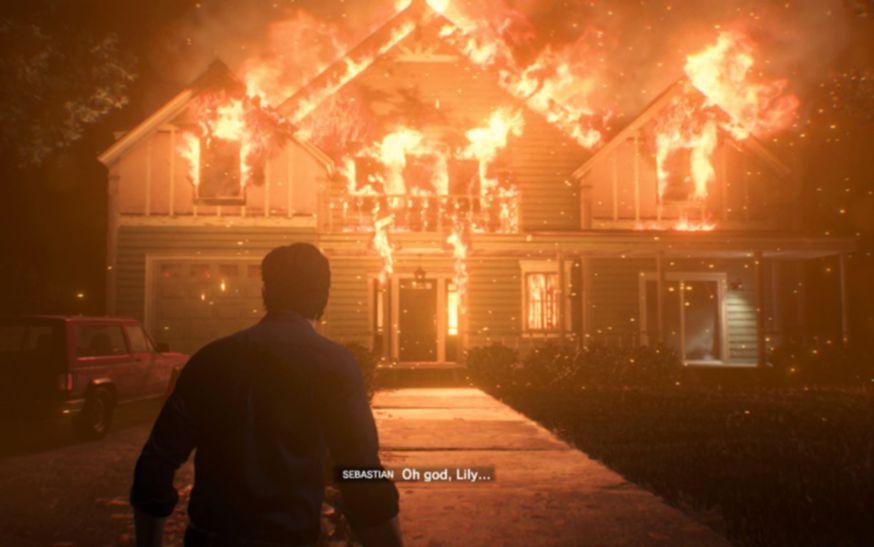
5 minute read
The evil wiThin 2
Publisher BethesdA / DeveloPer tAngo gAmewoRks / format XBoX one / release Date out now / cost £49.99
Hell and SebaStian Dom PePPiatt
The single most impressive thing about The Evil Within 2 is how it manages to make an effective horror experience without compromising player freedom. Think of some of the most nervewracking experiences: Alien: Isolation and Resident Evil 7 keep the player confined to a path, pretty much, dictating when and where the scares will hit by locking the camera and guiding you to uneasy beats.
The Evil Within 2 forgoes all that. It opens its demented world up to you pretty early on, almost intentionally, and seemingly smirking as it does so. Tango Gameworks knows its first game suffered from pacing issues and weird boss fights that broke you out of your immersion, and there’s a very sly, underlying knowingness to The Evil Within 2 that sort of refers to that. A lot of protagonist Sebastian’s flashbacks to the first game are dealt with in a sort-of exasperated way, and even your ever-present guide, Kidman, laughs off the past and basically says ‘well, it’s better this time’ as you start exploring the new world.
And it is. Set three years after the first game’s admittedly bizarre murder investigation, Sebastian Castellanos is brought back into clandestine agency Mobius and thrown against his will into the psychic plane of the STEM world. This world is effectively a physical manifestation of people’s memories, but something sinister is afoot and his once-presumed dead daughter Lily seems to be present.
The story certainly isn’t going to win any awards for originality – it’s all of the worst thriller clichés smushed together into one Cronenberg-esque mutant of a narrative. But it’s a functional story, for sure, and one that actually keeps you engaged as you explore more of the game’s fractal hub town, Union. The characters’ performances are equally as sketchy, but to be honest that kind of works in the game’s favour: it gives it a B-movie flavour that works really well alongside the visual and narrative setup of the game, too.

short cut
What is it?
A survival horror sequel from the mind behind Resident Evil and Dino Crisis.
What’s it like?
A through-thelooking-glass tale of madness combined with Cronenberg’s most bizarre films.
Who’s it for?
Fans of horror games, Anne Rice novels, American Horror Story and gore.
Weird world
That B-movie feeling steps up when you start exploring just how weird the STEM world can get. Because it exists purely within the mind, it gives the developer carte blanche to go mad with mechanics: Tango plays with time continuums, flashbacks, camera trickery – even your own orientation. It lets you breathe in the open world but then really starts to mess with you in scripted main missions, to the degree you feel as lost, frightened, confused and vulnerable as Sebastian himself.
In Japan, this game rocks the far superior title Psycho Break 2

left the way the game plays with time and imagery is a strong theme, and one that often sets up some particularly tense and awful moments.
The Evil Within 2 plays with player expectation and subverts it in the same way Arkham Knight did – it’s amazing what a few little camera tricks can do to make you feel completely lost within a game. It’s a brave move, and it suits The Evil Within 2 very well. Combine this with some truly horrific monster designs that often take you off-guard, and you’ve got a game that celebrates all the best tenets of a thriller movie, as well as a body-horror masterpiece. It’s an impressive combination.
Unfortunately, all of this is slightly offset by the game’s combat (which is a crux of the core gameplay). It’s certainly improved from the original, but it still feels a bit too heavy and meaty – occasionally unresponsive. Part of it intentional – you’re a cop, not a marine, after all – but that only goes so far when you’re trying to line up a melee attack and it feels like aiming through syrup.
Ammo is as scarce as you’d expect in a game like this, making stealth and crafting vital if you want to survive. The crafting system is a nice touch, especially since it bolsters the risk/ reward of exploring the well-crafted open world. It also pushes you into areas you’d otherwise perhaps avoid, or have little interest exploring were it not for that gold glint that belies an ammo pouch upgrade, or similar. The stealth, however, is problematic – sight cones are inconsistent and controls are heavy, making some stealth sections frustrating and feel longer than they should.
far left Sometimes you become so disoriented you have no idea how to escape.
rigHt thanks to protagonist Sebastian’s now-enriched backstory, you find yourself associating with him more deeply.
some evil without?
thanks to the lengthy exposition dumps and generally detached storytelling of the sequel, The Evil Within 2 is pretty forgiving to players that haven’t played the first game. You can pretty much jump straight into this game without even touching the first one (and it’s much better, so you should). there are flashback sequences and collectible files you can read that catch you up on the last story, all ingame, so if you’re keen for a horror experience, don’t be put off by the big ‘2’ in the title.

Goo feeling
The RPG system in the game (which boil down to collecting green goo and red goo to upgrade your kit and ‘abilities’) also offers another level of progression, but sometimes feels like a compromise to the survival horror aspect of the game: yes, it gives you bonus objectives to seek out in your downtime, but it also feels like you can overpower Seb a little too early, offsetting that survivalist element Shinji Mikami games usually do so well. At least bosses can still one-shot you, though, for better or worse.
The Evil Within 2 excels at delivering an experience that celebrates the grotesque, that pushes you forward through an open world of horror and tension without compromising too much of that core survival experience. The game certainly feels more progressive than its predecessor, but because of that it also feels less pure – but we think that’s a good thing. It’s a fusion of genres that offers an engaging story with a well-thought world and some sometimes dodgy, sometimes on-point mechanics. We wouldn’t enjoy a Mikami game any other way. n
oXm verDict
A gripping, well-told horror story held back by occasionally awkward handling.










